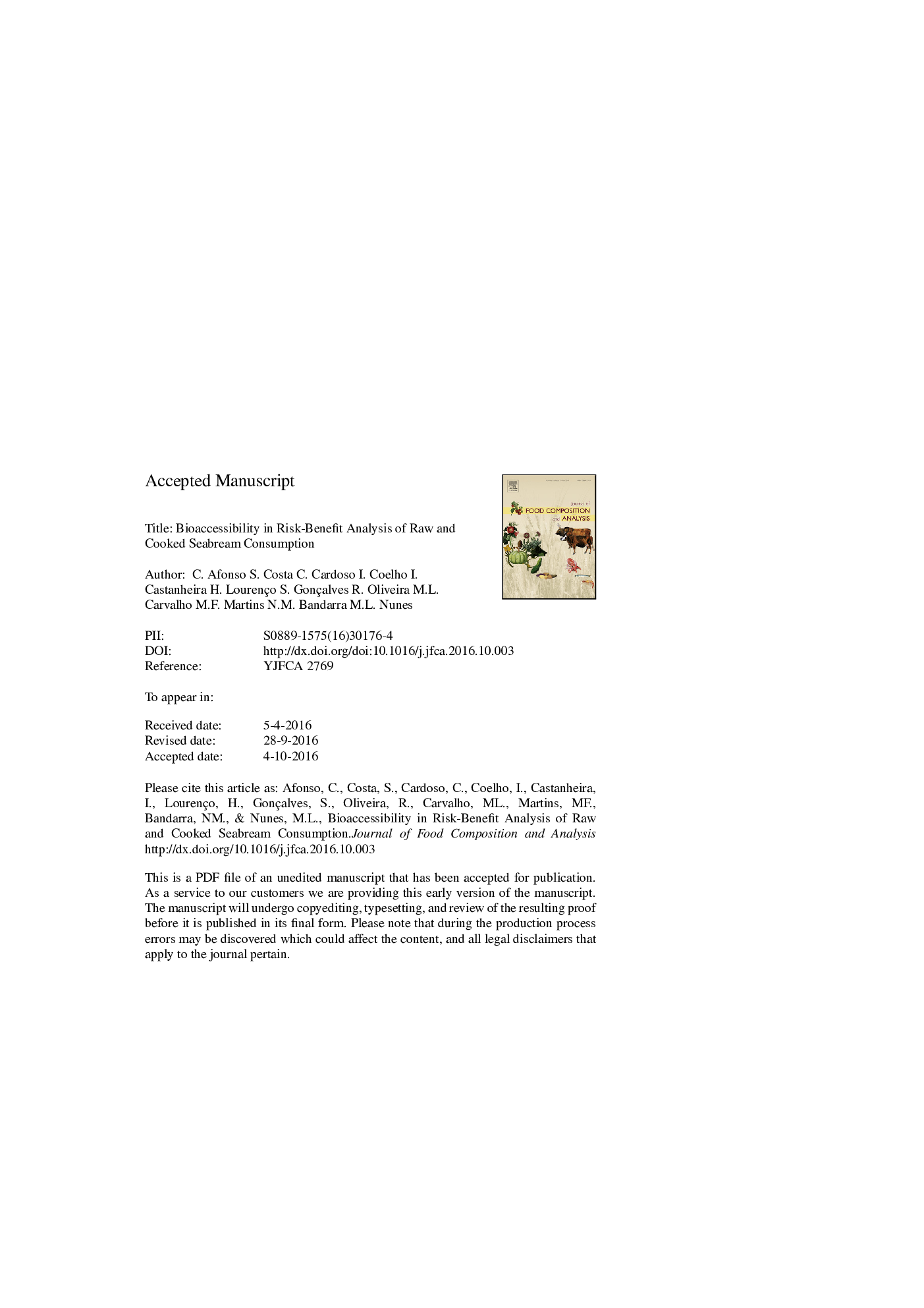| Article ID | Journal | Published Year | Pages | File Type |
|---|---|---|---|---|
| 7619764 | Journal of Food Composition and Analysis | 2018 | 38 Pages |
Abstract
The composition of raw and cooked gilthead seabream (Sparus aurata) was analysed. The bioaccessibility of arsenic (As), selenium (Se), mercury (Hg), and methylmercury (MeHg) in raw and cooked fish was studied by an in vitro model. A risk-benefit assessment was performed taking into account bioaccessibility. The content of contaminants Hg and As displayed a significant increase for every culinary treatment, only As content in boiled fish did not increase. Regarding bioaccessibility, while bioaccessible As was high (over 96%), the share of Hg (and MeHg) available for intestinal absorption was reduced by cooking, especially by grilling, 39% (60%) and roasting, 38% (55%). The risk-benefit probabilistic assessment leads to an advice of not exceeding one weekly meal of gilthead seabream. This recommendation concerns mainly pregnant and nursing women. However, Se bioaccessibility was high -minimum of 85% in boiled seabream-, thus helping to balance the deleterious effects of MeHg.
Keywords
Related Topics
Physical Sciences and Engineering
Chemistry
Analytical Chemistry
Authors
C. Afonso, S. Costa, C. Cardoso, I. Coelho, I. Castanheira, H. Lourenço, S. Gonçalves, R. Oliveira, M.L. Carvalho, M.F. Martins, N.M. Bandarra, M.L. Nunes,
